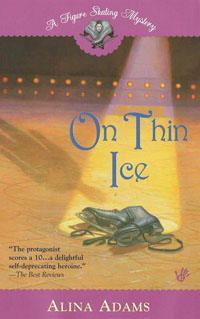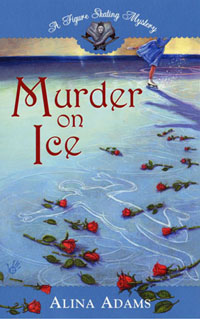LIGHTS, CAMERA, AXEL (PART #5)
In 1992, the 1984 and 1988 Olympic Champion Katarina Witt showed how much she'd learned about the positive public-relations power of media images. While working as a backstage reporter for CBS, Witt invited a German camera-crew to film her in action. She took them all over the CBS complex, boasting about her assorted roles in the production, and even going so far as popping in on an edit session, asking the producer in charge to climb out of her chair so that Katarina might sit in it and look like she was the one supervising the show. The producer politely declined.
By 1994, French champion Philippe Candeloro took collaboration with the media a step further and, when a CBS producer pointed out that a moment of his program would be more effective if focused at a particular camera, Philippe actually took the advice, changed his presentation -- and won the Olympic Bronze medal.
At eligible competitions, television producers claim they try their best to be unobtrusive and not disturb the natural rhythm of the sport. Yet, at a live event, a production assistant is often stationed by the judges' desk to insure that marks are revealed at television's convenience. A nervous skater may be sitting in the kiss-and-cry area, waiting to see results that will affect the rest of their life. But, if television happens to be in a commercial at the moment, the skater will just have to wait a tad longer.
With professional competitions, on the other hand, television doesn't mind getting involved, operating on the philosophy that the skaters and producers are working together to present the best show possible.
For instance, at the 1995 "Challenge of Champions," Doug Wilson evokes, "(1994 World Champion from Japan) Yuka Sato had a moment of presentation which was on one side of the arena, between what would be the blue (hockey) line and the red line. I presumptuously asked if she thought she might be able to rechoreograph that a little, so when she stopped to make that presentation, she was at the red line position, in front of my camera. Skaters want to make eye-contact with the audience. (But, for TV, that means) they're looking away. What they want to do to the audience of 1,000 people in front of them, they're not doing to the TV audience that's ten million. If they're about to present themselves to the world, it's better if we see their faces."
However, sometimes the face television presents to the world is not necessarily one the skater wants to be seen....
(TO BE CONTINUED FRIDAY, DECEMBER 2, 2005)
By 1994, French champion Philippe Candeloro took collaboration with the media a step further and, when a CBS producer pointed out that a moment of his program would be more effective if focused at a particular camera, Philippe actually took the advice, changed his presentation -- and won the Olympic Bronze medal.
At eligible competitions, television producers claim they try their best to be unobtrusive and not disturb the natural rhythm of the sport. Yet, at a live event, a production assistant is often stationed by the judges' desk to insure that marks are revealed at television's convenience. A nervous skater may be sitting in the kiss-and-cry area, waiting to see results that will affect the rest of their life. But, if television happens to be in a commercial at the moment, the skater will just have to wait a tad longer.
With professional competitions, on the other hand, television doesn't mind getting involved, operating on the philosophy that the skaters and producers are working together to present the best show possible.
For instance, at the 1995 "Challenge of Champions," Doug Wilson evokes, "(1994 World Champion from Japan) Yuka Sato had a moment of presentation which was on one side of the arena, between what would be the blue (hockey) line and the red line. I presumptuously asked if she thought she might be able to rechoreograph that a little, so when she stopped to make that presentation, she was at the red line position, in front of my camera. Skaters want to make eye-contact with the audience. (But, for TV, that means) they're looking away. What they want to do to the audience of 1,000 people in front of them, they're not doing to the TV audience that's ten million. If they're about to present themselves to the world, it's better if we see their faces."
However, sometimes the face television presents to the world is not necessarily one the skater wants to be seen....
(TO BE CONTINUED FRIDAY, DECEMBER 2, 2005)






0 Comments:
Post a Comment
Links to this post:
Create a Link
<< Home